|
|
| ALGEBRA
- solved problems |
|
|
|
|
|
|
|
The
limit of a function
|
| The
limit of a function is a real number L
that f
(x)
approaches as x
approaches a given real number a,
written |
 |
| if
for any e
> 0 there is a d
(e)
> 0 such that |
f
(x)
-
L | < e
whenever | x
-
a | < d (e). |
|
| Continuous
function |
| A
real function
y = f (x)
is continuous at a point a
if it is defined at x =
a
and |
 |
| that
is, if for every e
> 0 there is a d
(e)
> 0 such that |
f
(x)
-
f
(a)
| < e
whenever | x
-
a | < d(e). |
|
| Limits
at infinity (or limits of functions as x approaches
positive or negative infinity) |
|
|
|
Evaluate
the following limits,
|
|
|
|
|
Solution: a) As x
tends to minus infinity f
(x)
gets closer and closer to 0. As x
tends to plus infinity f
(x)
gets closer and
closer to 0. Therefore,
|
|
|
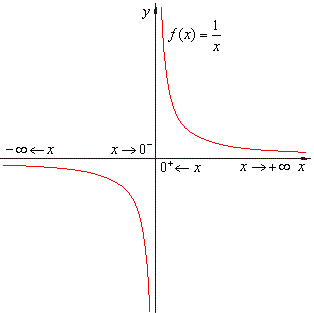
|
|
b) As x
tends to 0 from the left f
(x)
gets larger in negative sense. As
x
tends to 0 from the right f
(x)
gets larger in positive sense. Thus,
|
|
|
|
|
| Vertical
asymptote |
| If
there exists a number a
such that |
 |
| then
the line x
= a is the vertical
asymptote. |
|
| Horizontal
asymptote |
| If
there exists a number c
such that |
 |
| then
the line y
= c is the horizontal
asymptote. |
|
| Slant
or oblique asymptote |
| If
there exist limits |
 |
| then,
a line y = mx
+ c is the slant
asymptote of the function f
(x). |
|
|
|
|
Find
the vertical and the horizontal asymptote
of the function |
 |
|
| Solution:
Since, |
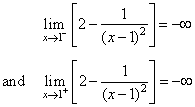 |
| then x
= 1 is the vertical asymptote. |
|
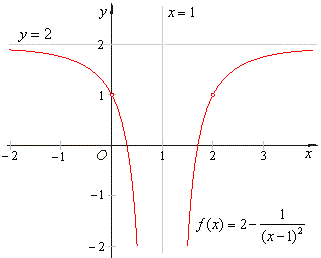 |
|
| And
since, |
 |
|
|
| then y
= 2 is the horizontal asymptote. |
|
|
|
|
Calculate
asymptotes and sketch the graph of the function |
 |
|
| Solution:
By
equating the numerator with zero and solving for
x
we
find the x-intercepts, |
| x2
-
x -
2 = (x + 1)(x -
2) = 0, |
| x1
= -1
and
x2
= 2. |
| We
calculate f
(0)
to find the y-intercept, |
| f
(0)
= 2/3. |
| By
equating the denominator with zero and solving for
x
we find the vertical
asymptote, |
| x
= 3. |
| Let
calculate following limits |
 |
| to
find the slant asymptote y
= mx + c. |
|
 |
|
 |
 |
| Therefore,
the line y
= x + 2
is the slant asymptote of the given function. |
|
|
|
|
Find
the following limits,
|
|
 |
| Solution:
The graph of the tangent
function shows, |
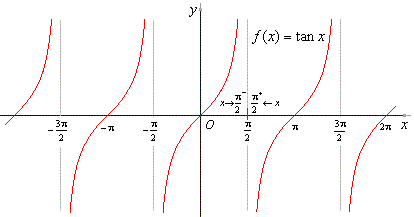 |
| as
x
approaches
p/2 from the left,
the tangent
function increases
to plus infinity, while as x
approaches
p/2
from the
right, the function decreases to minus infinity, therefore |
 |
|
|
|
|
Evaluate
the limit |
 |
|
|
| Solution: |
 |
|
|
|
|
|
Evaluate
the limit |
 |
|
|
| Solution: The graph of the
arc-tangent
function shows,
as x
tends to minus infinity the function values
approach -
p/2
while, as x
tends to plus infinity,
the function values approach p/2. |
| Therefore, |
 |
| and |
 |
|
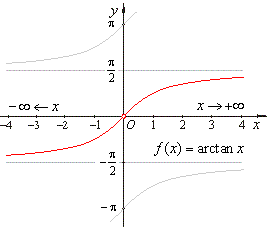 |
|
|
|
|
|
|
|
|
|
|
|
| Solved
problems contents - A |
|
 |
|
| Copyright
© 2004 - 2020, Nabla Ltd. All rights reserved. |